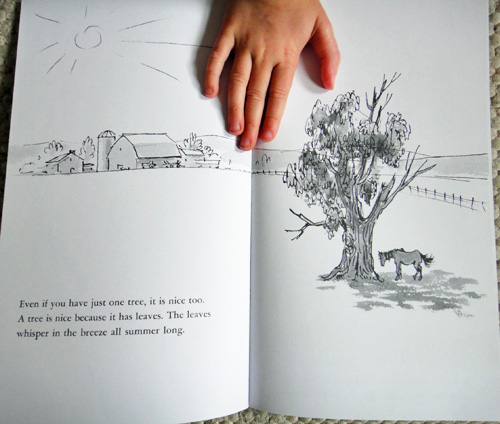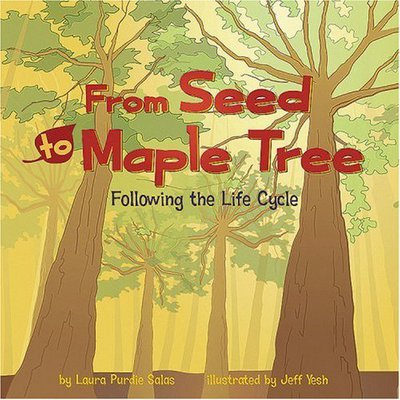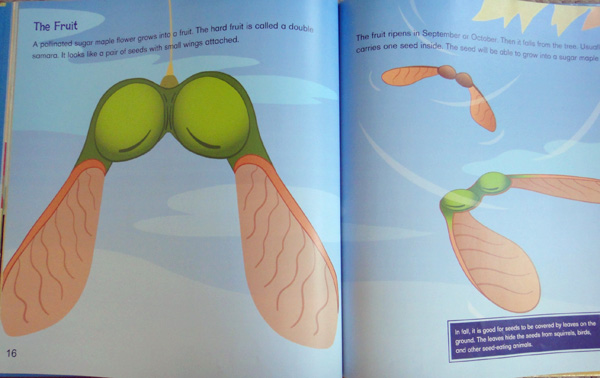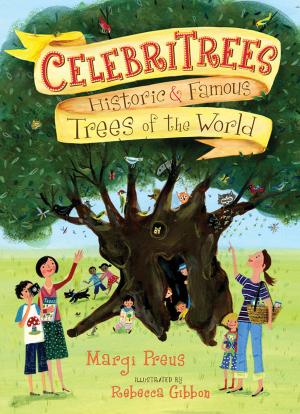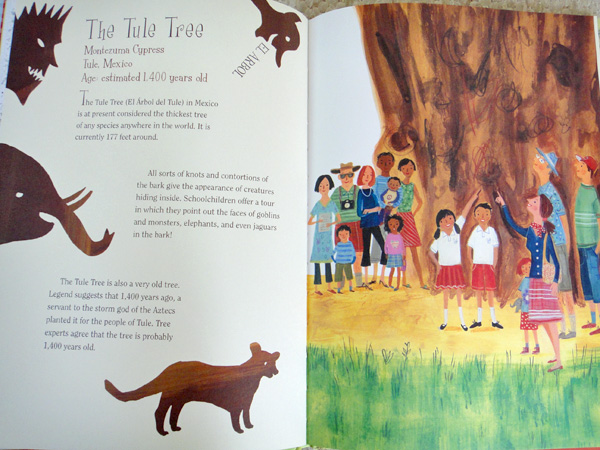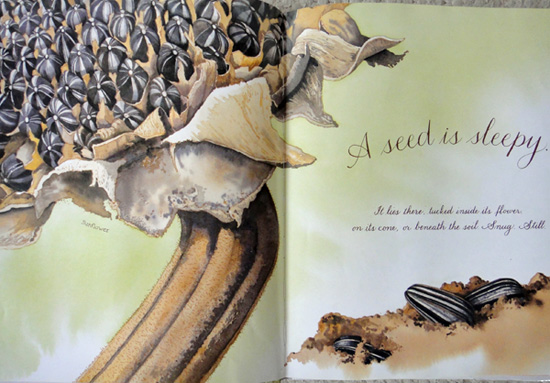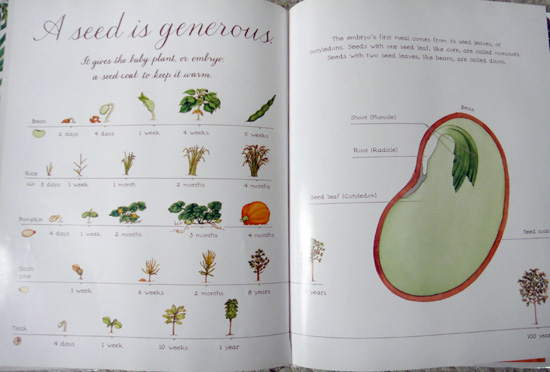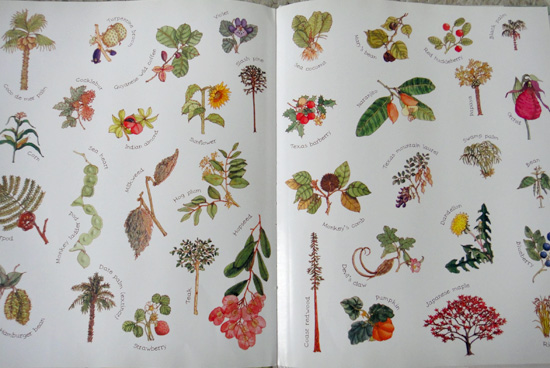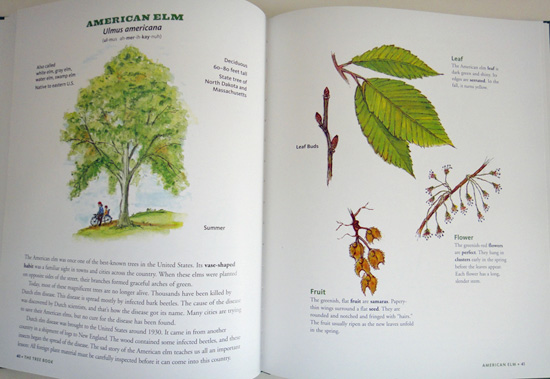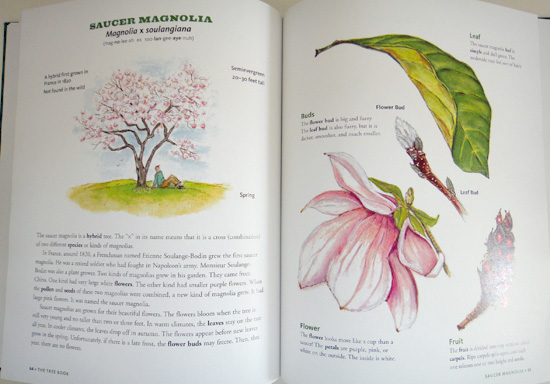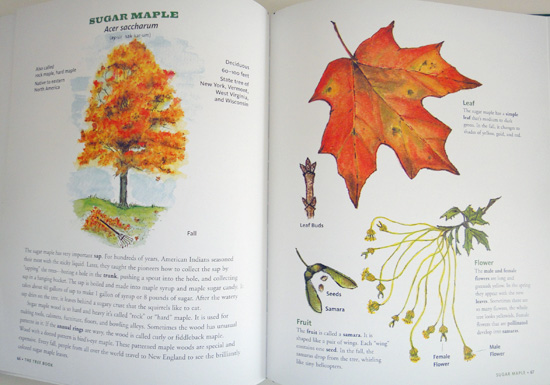It was just a matter of time until I got around to this one... today's storybook is the save-the-trees classic from Dr. Suess, The Lorax.

Now, in the interest of full disclosure, I will say that this is not my favorite Dr. Seuss book. I don't remember ever reading it as a kid and it seems a little overly preachy to me reading it now. But then again, my favorite Seuss book was The Sneetches , whose story about having "stars upon thars" is no less preachy than the Lorax, so I'm not going to quibble. Plus, I never could resist a good Seuss rhyme!
, whose story about having "stars upon thars" is no less preachy than the Lorax, so I'm not going to quibble. Plus, I never could resist a good Seuss rhyme!
The Lorax has this long, strange, dark opening where a young boy discovers the home of the Once-ler at the far end of town and tries to get him to tell his story. The Once-ler's story is the history of this desolate place "where the wind smells slow-and-sour...and no birds ever sing except old crows." As the Once-ler begins his tale, the landscape is transformed into a place full of color and fantastical Seuss creations: "It all started way back... Way back in the days when the grass was still green.... And I first saw the trees! The Truffula Trees!"

Way back then, the Brown Bar-ba-loots lived in the shade of the Truffulla trees and the Humming-Fish hummed in the rippling pond. But this book is really about the trees. "Those trees! Those Truffulla trees! All my life I'd been searching for trees such as these."
The Once-ler knew just what to do with those trees.

Why chop them down and knit a Theed, of course! You may be asking, what is a theed? That's just the question the Lorax had. He popped up right out of the stump and demanded to know just what "you've made of my Truffula tuft."

The Lorax speaks for the trees, you see, because they cannot speak for themselves. He asks the question he would like us to consider: just what is so important that someone would cut down a tree to make it? The Once-ler doesn't have a very good answer. He replies that "A Theed's a Fine-Something-That-All-People-Need!" He doesn't really know what people will use it for, but if they'll pay money for it, that's all he needs.
I really like Seuss's play on the idea of need here. What do we really need? Do we need a Theed? Do we need all the many things we make out of trees? Is it mere greed that we confuse for need? Is is possible that we might need trees more than Theeds? The Once-ler isn't thinking about any of these things. All he sees is that money grows on those trees: "Here's a wonderful chance for the whole Once-ler Family to get mighty rich!"

As his Theed factories grow larger, the sound of the singing Swomee-Swans is replaced by the sound of the chopping of trees and the cries of the Lorax. You see, the Bar-ba-loots need the Truffula fruits and the Humming-Fish need water that isn't so smeary. So off they must go in search of a new home.

"BUT business is business," replies the Once-ler. And Business must get bigger. That is what it needs.
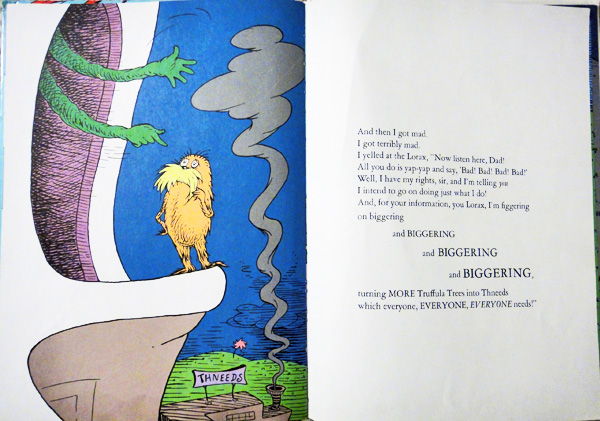
It needs more and more Theeds, more and more trees, more and more needs. Until there are no more trees and no more need for Theeds.
When the last Truffula tree was gone, the Once-ler family packed up and left the Once-ler alone in the dreary place he'd made. The Lorax left him too. He watched his buildings fall apart and watched the Grickle-Grass grow. I guess Grickle-Grass is really a weed, something that no-one needs and absolutely no good for making Theeds.
The Once-ler has had a lot of time to think about those things the Lorax said so long ago. And now that the boy has come, the Once-ler understands. "Truffula trees are what everyone needs." And he throws down the last of the Truffula seeds.

Yes, we need the trees. But only the Lorax understood what the trees need. They need someone to speak for them. They need us. "UNLESS someone like you cares a whole awful lot, nothing is going to get better. It's not."
Alright, you know what you need to do....

Now, in the interest of full disclosure, I will say that this is not my favorite Dr. Seuss book. I don't remember ever reading it as a kid and it seems a little overly preachy to me reading it now. But then again, my favorite Seuss book was The Sneetches
The Lorax has this long, strange, dark opening where a young boy discovers the home of the Once-ler at the far end of town and tries to get him to tell his story. The Once-ler's story is the history of this desolate place "where the wind smells slow-and-sour...and no birds ever sing except old crows." As the Once-ler begins his tale, the landscape is transformed into a place full of color and fantastical Seuss creations: "It all started way back... Way back in the days when the grass was still green.... And I first saw the trees! The Truffula Trees!"

Way back then, the Brown Bar-ba-loots lived in the shade of the Truffulla trees and the Humming-Fish hummed in the rippling pond. But this book is really about the trees. "Those trees! Those Truffulla trees! All my life I'd been searching for trees such as these."
The Once-ler knew just what to do with those trees.

Why chop them down and knit a Theed, of course! You may be asking, what is a theed? That's just the question the Lorax had. He popped up right out of the stump and demanded to know just what "you've made of my Truffula tuft."

The Lorax speaks for the trees, you see, because they cannot speak for themselves. He asks the question he would like us to consider: just what is so important that someone would cut down a tree to make it? The Once-ler doesn't have a very good answer. He replies that "A Theed's a Fine-Something-That-All-People-Need!" He doesn't really know what people will use it for, but if they'll pay money for it, that's all he needs.
I really like Seuss's play on the idea of need here. What do we really need? Do we need a Theed? Do we need all the many things we make out of trees? Is it mere greed that we confuse for need? Is is possible that we might need trees more than Theeds? The Once-ler isn't thinking about any of these things. All he sees is that money grows on those trees: "Here's a wonderful chance for the whole Once-ler Family to get mighty rich!"

As his Theed factories grow larger, the sound of the singing Swomee-Swans is replaced by the sound of the chopping of trees and the cries of the Lorax. You see, the Bar-ba-loots need the Truffula fruits and the Humming-Fish need water that isn't so smeary. So off they must go in search of a new home.

"BUT business is business," replies the Once-ler. And Business must get bigger. That is what it needs.

It needs more and more Theeds, more and more trees, more and more needs. Until there are no more trees and no more need for Theeds.
When the last Truffula tree was gone, the Once-ler family packed up and left the Once-ler alone in the dreary place he'd made. The Lorax left him too. He watched his buildings fall apart and watched the Grickle-Grass grow. I guess Grickle-Grass is really a weed, something that no-one needs and absolutely no good for making Theeds.
The Once-ler has had a lot of time to think about those things the Lorax said so long ago. And now that the boy has come, the Once-ler understands. "Truffula trees are what everyone needs." And he throws down the last of the Truffula seeds.

Yes, we need the trees. But only the Lorax understood what the trees need. They need someone to speak for them. They need us. "UNLESS someone like you cares a whole awful lot, nothing is going to get better. It's not."
Alright, you know what you need to do....



